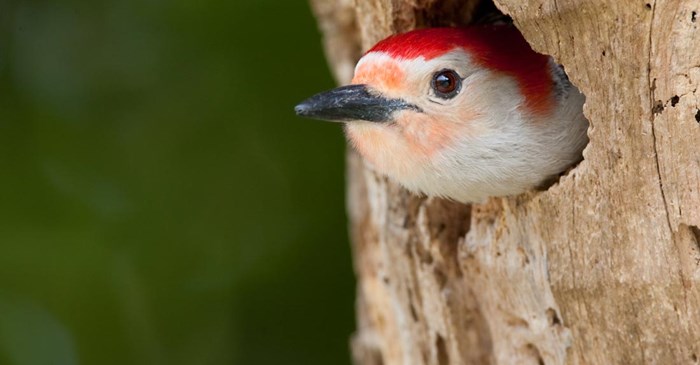Bird nests can be difficult to find. When you do come upon the rare circumstance of seeing one up close, you get a special opportunity to appreciate the craftsmanship and care that little birds put into these structures to protect their eggs and young.
Cup nests
The cup nest is what you might call the prototypical nest. Among North American birds, it’s one of the most common, as this is the nest of choice for the American Robin, Northern Cardinal, finches, waxwings, sparrows and mockingbirds. These can be found on tree forks and in branches and shrubs, though birds sometimes choose to set their nests in man-made structures as well. Others will opt for a ground nest in a bushy or grassy area.
The exterior is often made of coarse materials like sticks, bark, grasses, stems and dried flowers. Many birds weave these together into a circular cup, while others use glue-like substances, such as mud, or even cocoons and spider eggs to make the fibers stick together. The inner cup is then lined with soft materials, like fine grasses, moss and feathers, rootlets, plant down, hair and animal fur.
Cavity nests
A hollowed-out space inside a tree gives eggs and babies a safe haven. Woodpeckers, nuthatches, chickadees, bluebirds and titmice will excavate their own or find pre-made holes in the soft wood of a dead or decaying tree. The finished product is an opening that leads to a tube that extends downward into the tree.
To cushion the eggs and nestlings, birds will line these cavities with sawdust, grass, feathers, moss and damp leaves. Some birds may also include a small cup inside to provide protective bedding for their young.
Human activities like logging, development, and fire suppression efforts can limit the stock of available decaying trees these birds need for their nests. To support them, consider hanging a nest box or two in your yard.
Pendant nests
If you find a hanging pendant nest on a small branch, you’ve really discovered something special. To make these, the Baltimore Oriole weaves together long fibers, such as grass, wool, horsehair, and even man-made materials, like cellophane and twine. The Bushtit uses spiderwebs, creating a stretchy but strong sac. Inside, the bird lines the little sac with soft materials, like mosses, grass, rootlets and animal hair.
Don’t have many birds nesting near your property? Consider hanging feeders and nesting boxes in your yard to encourage birds to create their homes in your surrounding spaces, which will result in more bird activity in your immediate area. Fill your feeder with fresh ingredients found only in a high-quality bird food mix, like Lyric Fine Tunes No Waste Mix, perfect for bluebirds and young birds.
